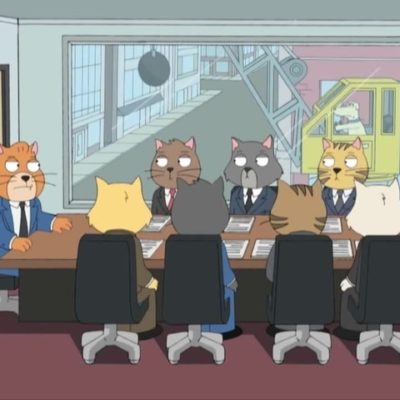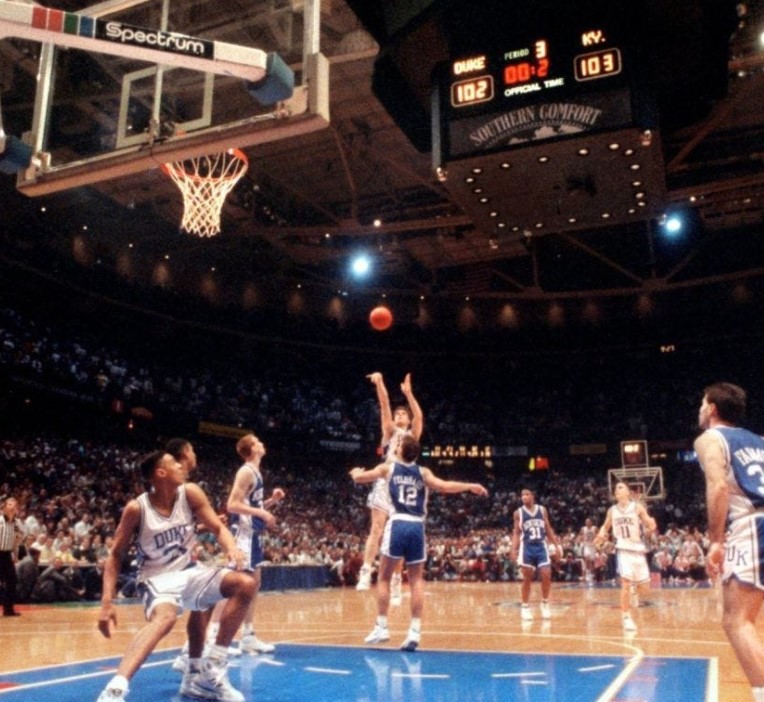Well folks, here we are entering the home stretch of the year, a time where many people wind down their work activity to accommodate as much holiday celebration as possible. At least that’s what I do because let’s face it, there are no new deals going into the market in December and transactions that close on December 31 are typically mostly wrapped up by mid month. That’s just how it rolls in the M&A world.
On the other hand, the end of the year is also an opportune time to cram in a bunch of meetings, precisely because everyone is less busy with actual “work” so there is an inordinate amount of time allocated to strategizing, finger-tenting and “next yearing”. And as luck would have it, there has been no shortage of meetings in the last little while so I thought before getting into my usual holiday themed blogs I would write a bit about some of these meetings that have been happening or are currently under way because some of them are important, some are just amusing and others have the potential to impact our collective lives/sanity.
OPEC and OPEC+
As we should all be aware by now, the boys from OPEC and their new found friends at OPEC+ (otherwise known as Russia) have been meeting on a semi-annual basis in Vienna to review the state of the oil universe and set production quotas since, well, since the cartel was originally formed in 1960 (anniversary warning!). Of late of course these meetings have been significant, affecting not only OPEC production, but commodity prices, investment decisions, stock performance and the economy in general, Alberta’s in particular.
Since this time in 2014, this particular year-end meeting has either been a ray of sunshine or a harbinger of doom for the energy industry, with little room in between.
Currently, OPEC and OPEC+ (i.e. Russia) have been operating under a collectively agreed 1.2 million barrel curtailment of production, which with Saudi over-cutting is actually a 1.6 million barrel cut. This has been put in place to try to restore balance to the oil market, prop up prices and provide some validation to the mostly absurd $1.7 trillion IPO valuation for Saudi Aramco.
Sadly, the current round of cuts haven’t really accomplished these goals because a combination of an uncertain trade war weary global economic environment and an increasingly potent anti-fossil fuel movement has managed to overshadow a slowing shale oil juggernaut, a lack of significant large project conventional upstream investment and an increasingly unstable Middle East to keep prices down.
The last few years of course, I have managed to obtain a recording of the actual OPEC and OPEC+ meeting which has been vastly entertaining, but sadly this year I did not, mainly because the meetings were still in progress as I was writing this. But fear not, because I have zero shame and will instead engage in some fearless prognostication as to what transpired this go around as the group came to their recently released consensus agreement.
First, Saudi Arabia wants to see greater compliance from the other members so it doesn’t have to disproportionately shoulder the burden of cuts and in essence subsidize the other countries. To this point, other major players such as Iraq have indicated a general willingness to play ball on this front.
Second, Russia is the main OPEC+ party and while they have cut a bit, they are not actually counted on to do what they say they will, which of course is typical Russia. They are mainly there for the psychological effect and to further their own global ambitions to supplant US influence in any way they can. It is expected that Russia will agree to whatever was proposed and over the long run get condensate and other liquids excluded from their agreed cuts, thus in effect allowing them to increase production while at the same time claiming they are cutting and in compliance. Brilliant.
Third, there is a question of how long cuts should remain in place. The existing cuts are in effect until March. It is widely expected that the cuts will be extended, the only question is for how long.
While before the agreement just released this morning a number of parties were suggesting additional cuts, the question is always off what base will they cut. In all reality, if the rest of the OPEC and OPEC+ members just abided by the production levels they had previously agreed to (looking at you Iraq and Nigeria) and the Saudis kept their production where it is, it would be a de facto incremental cut.
Lastly, there was some noise that the Saudis have threatened that if members don’t live up to their commitments they will open the spigots and flood the market, thus cratering prices and causing Jason Kenney’s head to explode. While some might like that, this is exceedingly unlikely given the Saudi Aramco IPO.
So what did I expect? I expected a small incremental cut of maybe 100,000 barrels over the 1.6 million barrels currently being held back (spun likely as a 500,000 barrel cut over the 1.2 million target), a word salad statement of agreement to better abide by existing commitments and an agreement to notionally extend the cuts to the end of 2020 with a review in March 2020. So really an agreement to do more of the same dressed up as action.
What actually happened was an announced additional formal cut of 500,000 barrels to be reviewed in March (same level as what I thought above, but shared amongst the members) and an additional voluntary cut by Saudi Arabia of 400,000 barrels, for an all-in “cut” of 2.1 million barrels of oil per day.
Oh, and a now projected valuation for Aramco in excess of $2 trillion, which was their target all along. Funny that.
NATO
NATO just held its 70th anniversary meeting in London and it was a barn-burner. Well, not really a barn-burner but it was memorable and entertaining for all the wrong reasons.
With all the impeachment chaos going on in Washington this must have seemed to Donald Trump as an opportune time to go a meeting with allied heads of state, act presidential, get some stuff done and show America that he is large and in charge.
Unfortunately, that wasn’t meant to be because as we should all have figured out by now, Trump is going to Trump.
The sessions didn’t get off to the best start and quickly went downhill. Among the high(low)lights was a tense exchange between the Donald and Emmanuel Macron of France wherein Donald Trump basically threatened to have former ISIS members released into France prompting Macron to tell him to “get serious” and accuse the US of a) not defeating ISIS and b) being the cause of Middle East instability.
Next up in the cross-hairs was our very own Justin Trudeau and Canada who Trump accused of being laggards in their commitments to and actual defense spending. The basic NATO agreement is that member nations are targeting to have their defense spending equal to 2% of GDP by sometime around 2024, mainly because the US is rightly tired of footing the notional bill for an organization that benefits other countries. No more free rides as they say.
Canada of course is 100% guilty of being a total slacker on defense spending – always have been, always will be. Even when we do commit to increasing spending, it gets hopelessly bogged down in politics (see replacement helicopters, navy vessel procurement and/or fighter jets). Under the current Liberal government, spending has increased, but not rapidly enough for Trump, who pressed Trudeau on where we were at. 70% increase said Trudeau. What percent said Trump. 1.4% said Trudeau (it’s actually 1.31%). Aha! Said Trump.
Anyway, you get the picture. We aren’t performing, the US is mad, this is a big deal to Donald Trump and he was always going to make a big deal out of it. The kicker of course is that after each of these meetings, Trump elected to eschew protocol for a short press availability and instead launch into typical Donald Trump directionless, shambolic press conferences covering any and all topics – from the 2016 election to impeachment to defence spending to Shifty Shiff to the upcoming G7 meeting and the Dummy Radical Left Dems to whatever. All with any of various global leaders sitting uncomfortably in an armchair next to him. It was all very odd and uncomfortable.
The upshot of all this of course was the conference highlight where Justin Trudeau, Emmanuel Macron, Boris Johnson, Mark Rutte (Dutch Prime Minister) and Princess Anne were recorded clearly mocking Donald Trump and his extended press conferences resulting in a very angry Donald Trump calling Trudeau two-faced (insert blackface joke in 3-2-1…), cutting short his time at the meeting, cancelling his closing news conference and going home early. Have we mentioned before that Donald Trump is pretty thin-skinned?
Does it bother me that they engaged in this activity? Not so much – they are humans, right? And they were sharing a moment of frustration and humour, who among us has never in confidence said “can you believe that guy?” and let’s face it, none of these world leader meetings with Trump has ever been anything but a gong show. Ultimately world leaders appear to be moving on with their lives and have decided that it is OK to challenge a politically weakened US leader on some of his bullying ways and not be bound by the usual rules of decorum by making light of the whole situation. It’s not like the Donald pulls any punches in talking about other people – allies or otherwise.
Will there be a price paid for this? Who knows. Trump is musing about trade action to get NATO partners to pony up to their 2% target, but that seems unlikely to get much traction. That said, if he decides he needs Canada to be a bad guy to run cover on impeachment he will surely drag us through the mud, but he needs Canada to sign off on the USMCA so he gets a legislative win. So it’s complicated and the video, while an entertaining distraction and campaign ad fodder, will be assigned to the scrapheap.
COP 25
You would think this is a Jean Claude Van Damme Christmas movie about a rogue cop with a heart of gold who wakes from a coma 25 years after being shot by an arch-criminal. But you would be wrong.
Instead this is the mother of all meetings, the 25th annual Conference of the Parties to the UN Convention ion Climate Change, otherwise known as the guys who brought you such hits as the Kyoto Accord, the Montreal Action Plan, the Paris Agreement, The Copenhagen Accord, the Marrakech Accords, the New Delhi Work Programme, the Buenos Aires Plan of Action, the Bali Action Plan and the Doha Amendment. There are other conferences that are held concurrently to or prior to COP, all with nifty sounding names like “Meeting of the Parties” and aside from all being held in super-awesome vacation locations, these meetings all revolve around how to address climate change issues through lowering of emissions and/or (much less so) mitigation measures.
This year’s COP is being held in, you guessed it, an awesome location. Madrid is the host city after Brazil pulled out because their new president didn’t want to host and second choice Chile ended up withdrawing due to political unrest. It is expected that close to 25,000 delegates from 200 countries will attend the 12-day party/event.
Look, I’ve never attended one of these things, and I’m sure there is a plethora of great sessions and very earnest people in attendance, but that’s a lot of people – it’s hard to see how anything gets done. I’ve also been to Madrid. Sleep in, jamon for breakfast, giant lunch with a nice Rioja, siesta, tapas, dinner at 11 pm. Nothing is going to get done.
And the last time I checked, the United States and Donald Trump had pulled out of the Paris Accord, so they are missing a pretty key element.
That said, this year’s summit is being billed as one that could “make or break the world’s climate commitments” with no less than the UN Secretary General saying the summit marks the “point of no return” in humanity’s fight against climate change. Pretty heady stuff, although if I recall correctly, much the same has been said ahead of pretty much every COP in recent memory. I’m not saying it’s not true mind you, just that they say the same thing. Every. Single. Time.
Remember COP 21? Back in 2015? That was a good one. The last Obama one, right after the Federal election where Trudeau came to power. Canada sent a bazillion delegates because, well, Paris, right?
Not as many Canadians this time around I would think, although it has been strangely difficult to find out. But, Madrid, right?
At any rate, I clearly don’t know what happens at most of these meetings, since I never get invited, but I am happy to see that there is less of a Hollywood feel to this go around than the last time I paid attention in 2015, which was really just a circus. That’s not to say there won’t be any celebrity sightings there – I’ve already seem a few Greta photos and it’s in a big European capital, so Leo DiCaprio will surely be in attendance provided he catches the flight from Barcelona where he will likely park his mega-yacht.
This COP does have some significance though as it is the last COP before the Paris Climate Accord comes into force in 2020, so they are hoping to use this meeting to get a bunch of loose ends tied up so that they have, you know, a fully formed agreement – even if the United States isn’t a party and the terms are unenforceable.
One of the thorniest issues that is being arm-wrestled is finalizing Article 6 – which was carried over from the last meeting (COP 24 – in Katowice, Poland)…
Of course we all know what Article 6 is so resolving that is obviously “yuge”. What? You don’t know? Neither did I. So, Article 6 has to do with trading of emissions credits wherein say, one government can pay another to cut emissions more than they otherwise would and buy that credit to offset their emissions. Which would make sense for a country like Canada, that has high per capita emissions, lots of money and exports fossil fuels. There is also a section in there allowing for private companies to create and trade emissions credits, which is viewed as critical to accelerating innovation and investment in emissions reduction. This is nothing new of course as an emissions trading regime was implemented as part of the Kyoto Accord, resulting in typical gaming of the system and accumulation of phantom or hot air credits that now need to be dealt with. However, this time around there appears to be some effort to level the playing field by eliminating double-counting of emission reductions, setting rules around not being able to count reductions for projects that would have happened anyway and addressing issues related to indigenous and human rights.
How this all comes together could be a really big deal. No matter what, someone is getting rich off it.
I rather suspect that we will be revisiting all of this in COP 26 which is projected to be held in … Glasgow – hmm, Scotland in December – that’s a draw. Of course I am not invited – I never am. Just like my annual invitation to Davos always seems to get lost in the mail. I suppose I will just have to resign myself to sitting on the sidelines as the great brains in the world (sarcasm BTW) decide my fate.
Oh well, back to work I guess!
Speech from the Throne
I suppose I need to give this a bit of airplay as it is the Federal government’s playbook for the foreseeable future.
Essentially the speech rehashed their electoral platform with a minor shout-out to getting resources to market plus musings about pharmacare and universal dental care. Oh, and climate change. Always climate change.
Everyone is angry except the Bloc, which is typical. So the speech will pass its confidence vote and we can move on with the end of 2019 and get to it for 2020.
As I said, back to work.
Prices as at December 6, 2019
- Oil prices are up for the week. WCS gap still high at ~ $20
- Storage posted an decrease week over week
- Production was flat
- Natural gas storage above last year; approximately 5-year avg
- WTI Crude: $59.09 ($55.22)
- Western Canada Select: $38.30 ($35.57)
- AECO Spot: $2.488 ($2.404)
- NYMEX Gas: $2.306 ($2.261)
- US/Canadian Dollar: $0.7591 ($0.7529)
Highlights
- As at November 29, 2019, US crude oil supplies were at 447.1 million barrels, an decrease of 4.9 million barrels from the previous week and an increase of 3.9 million barrels above last year.
- The number of days oil supply in storage is 27.3 compared to 25.9 last year at this time.
- Production was flat for the week at 12.900 million barrels per day. Production last year at the same time was 11.700 million barrels per day.
- Imports decreased to 5.989 million barrels from 6.190 million barrels per day compared to 7.219 million barrels per day last year.
- Crude exports from the US fell to 3.135 million barrels per day from 3.480 million barrels per day last week compared to 3.203 million barrels per day a year ago
- Canadian exports to the US were 3.162 million barrels a day
- Refinery inputs rose during the week to 16.798 million barrels per day
- As at November 29, 2019, US natural gas in storage was 3,591 billion cubic feet (Bcf), which is equal to the 5-year average and about 20% higher than last year’s level, following an implied net withdrawal of 19 Bcf during the report week
- As at November 22, 2019, overall U.S. natural gas consumption rose by 7% during the report week.
- Production was up for the week. Imports from Canada rose 20% from the week before. Exports to Mexico were up 2%for the week
- LNG exports totaled 36 Bcf
- As of December 6, 2019, the onshore Canadian rig count was up 14 at 138 (AB – 91; BC – 9; SK – 33; MB – 3; Other – 2). Rig count for the same period last year was 186.
- US Onshore Oil rig count at December 6, 2019 is at 663, down 5 from the week prior.
- Peak rig count was October 10, 2014 at 1,609
- Natural gas rigs drilling in the United States is up 2 at 133.
- Peak rig count before the downturn was November 11, 2014 at 356 (note the actual peak gas rig count was 1,606 on August 29, 2008)
- Offshore rig count was flat at 22.
- Offshore peak rig count at January 1, 2015 was 55
US split of Oil vs Gas rigs is 84%/16%, in Canada the split is 61%/39%
Trump Watch: Gonna make my kid a Baron now – just watch me!
Kenney Watch (new!): Taking on the Euro-trash establishment
Trudeau Watch (for balance): Smirky McSmirkyson









